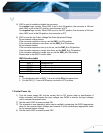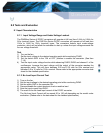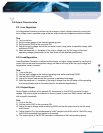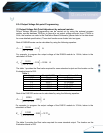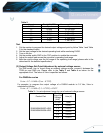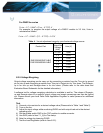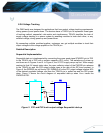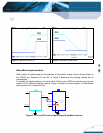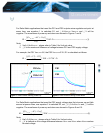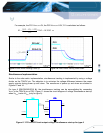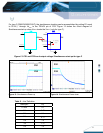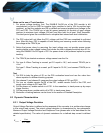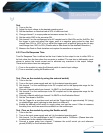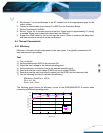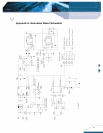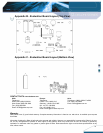
Test
1) Turn on the fan.
2) Adjust the input voltage to the desired operating point.
3) Set the electronic or resistive load at 50% of maximum load.
4) Change channel 1 to scope probe and measure across the
dynamic
R .
5) Set the switch SW2 to the converter ON.
6) Set channel 2 on the oscilloscope to be AC coupled and to 50mV/Div and for 5mS/Div. Set
the trigger to auto and adjust the trigger point at a negative going pulse for step load
change from 50% to 100% of Io or adjust the trigger point at positive going pulse for step
load change from 100% to 50% (Please refer to data sheet for the detailed information.)
7) Measure the Peak-to-Peak deviation and capture the waveform as required.
8.3.2 Turn-On Response Time.
Turn-On Response Time is defined as the time it takes for the output to rise to within 90% o
f
its final value from the time when the converter is enabled. The rise time is deliberately made
slower to reduce the inrush current and to eliminate any overshoot in the output voltage.
These test functions have two categories.
1.) Turn on the module by using the External switch to control input voltage.
2.) Turn on module by using the Enable on/off.
Test (Turn on the module by using the external switch)
1) Turn on the fan.
2) Turn on the input power supply and set it to the desired operating point.
3) Set channel 1 on the oscilloscope to be DC coupled and to the appropriate range for the
input voltage.
4) Connect a coaxial cable from channel 1 to BNC1 on the Evaluation Board.
5) Set channel 2 on the oscilloscope to be DC coupled and to the appropriate range for the
output voltage.
6) Connect a coaxial cable from channel 2 to BNC2 on the Evaluation Board.
7) Set the Time base to 2mS/Div
8) Set the Trigger for a one-time event and set the Trigger level at approximately 2V (rising)
or suitable trigger point (referring to data sheet) on channel 2.
9) Enable the external on/off switch to supply power and use the cursor V Bars to measure
the delay time, and then record the waveform on the oscilloscope.
Test (Turn on the module by using the Enable on/off)
1. Turn on the fan.
2. Turn on the input power supply and set it to the desired operating point.
3. Set channel 1 on the oscilloscope to be DC coupled and to 1V/division. (Please also refe
r
to data sheet for the detailed information).
4. Connect a scope probe from channel 1 between the on/off control pin and reference
ground (SGND) on the Evaluation Board.
17



